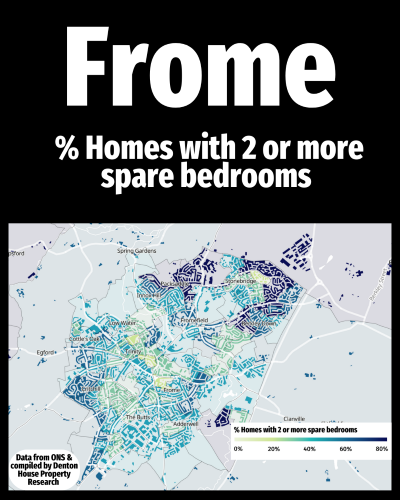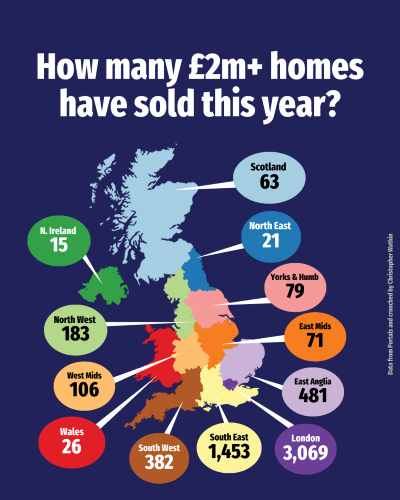Latest Property News
- Details
- Hits: 47
Average price of a semi detached home
The UK has a lifelong love affair with the semi-detached home. It is the backbone of suburbia, the street-by-street footprint of growing families, and for many of us it was where childhood happened. Semis offered just enough space to breathe, gardens to play in, neighbours close enough to feel part of something, and privacy without the isolation of detached living.
- Details
- Hits: 46
Fromes Spare ‘Spare’ Bedrooms
There is something very British about holding on to spare bedrooms. Many households in Frome have one, but a sizeable number have two or even three that sit untouched most of the year. The map reveals pockets of the town where large proportions of homes have significant unused space, especially in the darker shaded areas.
Is that a good thing? Well, yes and no.
- Details
- Hits: 67
Frome House Price Review: The December 2025 Update
Frome homeowner or landlord? Curious about the trends in the Frome property market? One measure is the average price paid for homes bought and sold in Frome in the last 12 months, on a rolling month by month basis.
Each month I like to share this figure, and whilst this figure alone will not tell you much, its trend will. My followers on social media know I write regular articles on the Frome property market. It is in those articles I expand and clarify what these monthly figures mean to you.
- Details
- Hits: 109
£2m plus sales in the UK this year, and what they tell us
With the Chancellor confirming plans to increase the council tax surcharge on higher value homes in England, often described as a mansion tax, it felt timely to look at how many £2m plus homes have actually sold in the UK this year.
The numbers show a very concentrated market. London leads by a long way, yet the capital only represents 1.782% of all the homes sold this year. That percentage alone shows how small this sector really is once you step back and look at the wider property market.
- Details
- Hits: 103
The 40 Year Rental Shock
The shift in private renting over the last 40 years is one of the most misunderstood trends in the UK property market. Everyone knows it has grown. Very few know by how much.
This graphic shows the percentage growth in households renting privately in each region since the early eighties. Some areas have risen modestly such as Scotland at 40.9%. Others have risen sharply such as the West Midlands at 118.3 % and the North West at 115.7%. Every region has moved, but the pace has varied.
It is neither a good thing nor a bad thing. It is simply what has happened.














